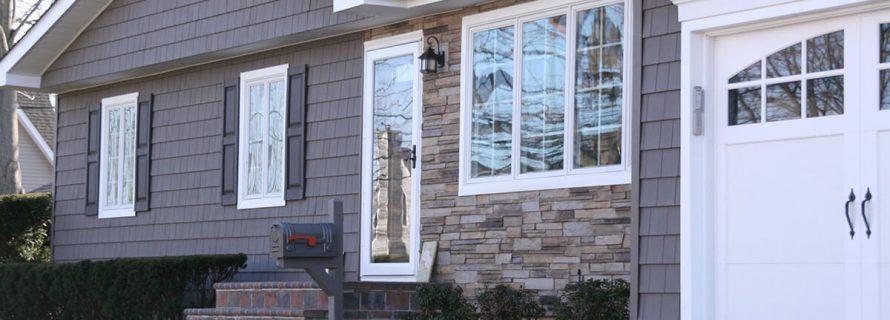Explore the benefits of modern siding

Siding is an important aspect of any home. It makes up the majority of the exterior and can help your home look beautiful to visitors, neighbors and passersby. But siding is also an important functional element to help protect your home’s interior structures from outdoor elements.
Alure Home Improvements’ exterior expert Mike Serra, who specializes in exterior design, explained how siding has changed over the years and why modern siding is far superior to previous options.
From wood to vinyl
From colonial times up through the 1950s, the most popular siding option for homeowners in the U.S. was wood. Although it looked good when installed, wood didn’t handle the elements well and could rot over time. It also required painting, cleaning and maintenance.
In the 1940s and ’50s, a new siding option came out called fiber board. It was designed to replace wood because it didn’t rot. However, it cracked easily, had too many air spaces and required paint. It was also made from asbestos, a now-known carcinogen.
Years later in the 1960s and ’70s, the first modern siding option emerged with aluminum siding. It didn’t rot or crack and was more airtight than older materials. It had strong wind resistance and came painted. However, it could dent easily, the paint faded, it was difficult to clean without removing paint and the aluminum conducted heat, making homes less energy efficient.
By the 1980s, vinyl siding was a new option, but it wasn’t quite perfect yet. It was better than aluminum because it carried many of the same benefits and came in a variety of colors, but it was colored throughout and didn’t wash off. However, when vinyl first emerged on the market it would expand and contract with temperature changes, which left it vulnerable to buckling.
In order to fix this issue, manufacturers began elongating the holes that attached the paneling to allow it to “float,” as Serra explained. This gave it space to safely expand and contract without damage. Another change that siding engineers added was to include new UV-inhibiting chemicals like titanium dioxide to prevent sun damage, which could lead to the color fading.
Modern vinyl siding
“Siding has come a long way. It’s truly maintenance-free today. It never needs to be painted … fade is minimized and the panel floats optimally,” Serra said in an interview.
One of the other benefits of modern vinyl siding over other options is that insulation board is installed to create a thermal barrier. Serra explained that he uses a 3/4-inch breathable insulation to strike the right balance between maximizing energy efficiency without trapping moisture.
Serra pointed to modern siding as the first line of defense for your home against temperature and water. It works with insulation and home wrapping to create a comprehensive moisture and temperature barrier that looks great.
For homeowners thinking of replacing an older or outdated siding option with modern vinyl, Serra advised people do their research and find a manufacturer they like. Homeowners should look for a comprehensive warranty that covers material damage as well as installation, so if anything goes wrong, they can get their home protected again without any out-of-pocket cost.
Modern vinyl siding has significantly improved since early siding options. You don’t have to worry about rot or draftiness – all you need to do is get it installed and admire its consistent great look for years.
- Additions and New Construction
- All Exteriors
- Alterations
- Basements
- Bathrooms
- Customer Service
- Customer Stories
- Decks
- Design & Planning Show
- DIY
- Doors
- Educational Resources
- Extreme Makeover Home Edition
- Fashion Show
- General Remodeling
- Green Living
- Handyman Home Services
- Home Decor
- Home Entertainment
- Home Improvement
- Home Improvements
- How to Tips
- In The Community
- Kitchens
- Off-the-Wall Remodeling Stories
- Remodeling
- Resources
- Roofing
- Siding
- Social Media
- Sunrooms
- Tips & Tricks
- Trends
- Windows

